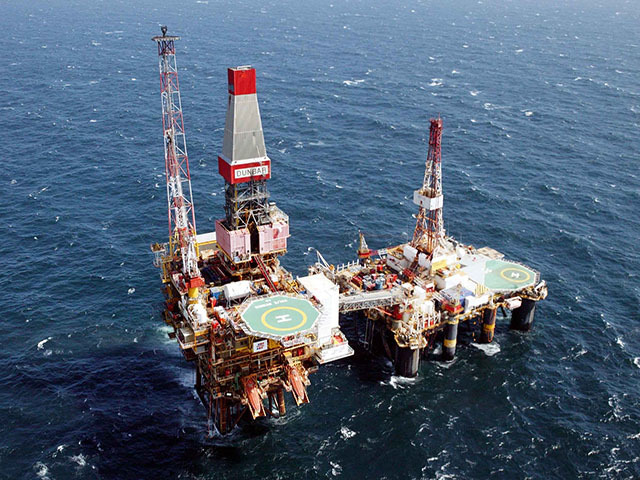
Total is ready to reactivate the drilling package aboard its UK North Sea Dunbar production platform to enable the company to seek further reserves to boost production and extend field life.
The company expects to conduct two well workovers first; to be followed by six infill wells with the objective of raising output from the field to between 10,000 and 15,000 barrels per day over the period 2014-2018. The campaign is expected to take three to four years.
Getting the platform’s drilling package back into business will swallow an estimated 60,000 man hours. It is the core of the so-called Dunbar Phase IV project.
According to Total’s house journal Courier North, Dunbar (in the drilling sense) has effectively been mothballed since June 2007 when the last “tender support vessel” departed the field.
Work on Phase IV has been quietly trickling along since February 2012, primarily removing key items of equipment ashore for refurbishment. Indeed, some 30,000 hours of work have already been carried out.
In February this year, the semi-submersible rig Borgsten Dolphin arrived in-field to provide the tender support needed by Total to break the back of the work. It was fitted with additional accommodation and a docking gangway prior to deploying to Dunbar.
“Inspections have revealed a higher level of degradation on the platform – a combination of the asset’s age, environmental corrosion and the fact that drilling equipment had been mothballed for more than five years,” Courier reports the project’s manager Mark Horn as saying.
“That’s created more work for us, but we’re expecting to re-start drilling operations some time in Q3. The final date will be weather dependent.”
This is two years later than the company indicated at the industry’s 12th Pilot Share Fair in Aberdeen staged in 2010.
The Dunbar platform was built in the early 1990s and started production in December 1994. The prize at that time was some 192million barrels of oil, 2.14million tonnes of natural gas liquids and liquid petroleum gas, plus 27.8billion cu.m of gas.
Designed production rates were 19,000 barrels of oil and 2.5million cu.m per day. So, for a time at least, the forthcoming drilling campaign will restore oil production close to the original specification.
The original configuration involved the drilling of 22 conventional production wells, plus two subsea. Four water injectors and one water disposal well were also drilled.
A total of 28 drill-slots were provided for in the platform’s design.
Recommended for you
